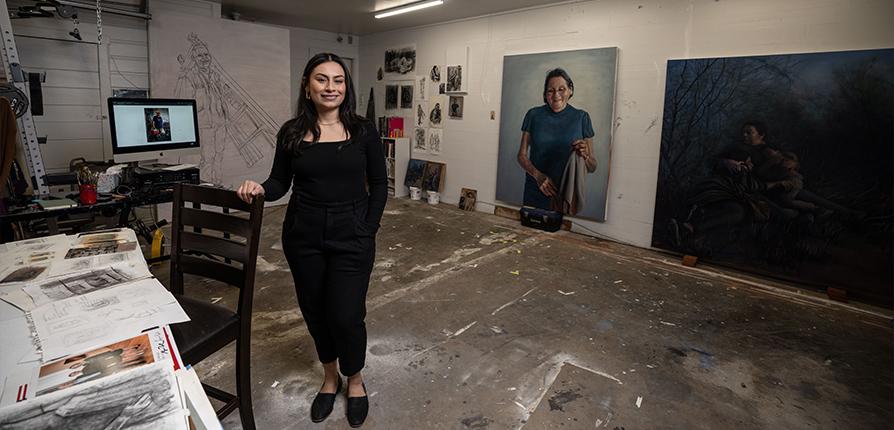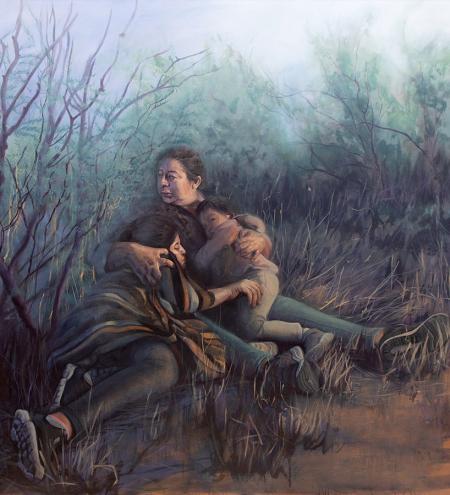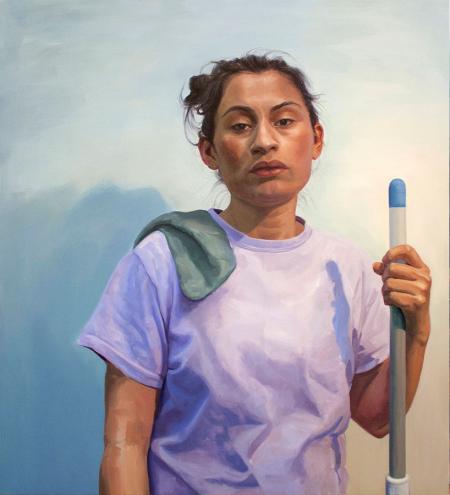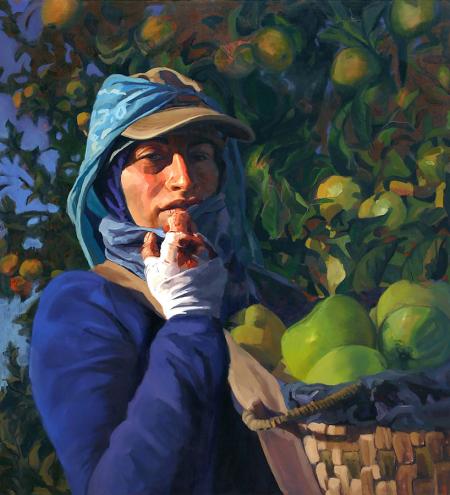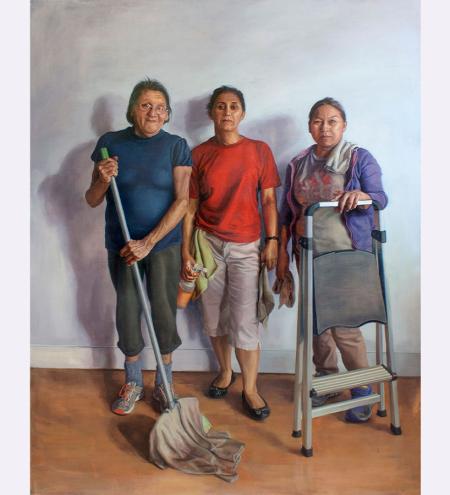Morales amplifies the stories of Latino people through larger-than-life canvases
Story by Christine Broussard '10 & '20
Photos by Lizeth Garcia
Artwork by Arely Morales '15
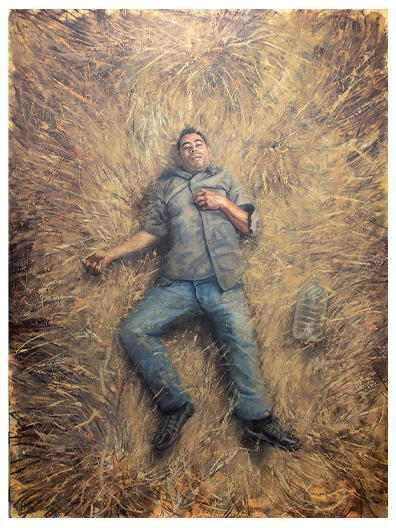
THE HALF-LIDDED EYES and relaxed mouth were the first things I noticed. At first, the painting of a man lying flat on his back in a field of gold and black lines seemed to offer a glimpse into a moment of pause — perhaps even of rest.
But then I saw the jug of water lying empty next to the man's body and felt my stomach drop. The gold of the field turned from soft to harsh, and the black charcoal lines marking the field's shadows became a creeping gloom. The dark-haired man in worn shoes and dirty clothes wasn't resting, I realized with horror. He was passed out — perhaps much worse — with vacant eyes staring into an unseen sky.
Propped in a corner of Arely Morales' studio garage, the 9-by-6-foot painting holds a weighty presence in a space filled with the SFA alumna's years of work. It's not the only piece, though, whose presence you can feel in your bones.
Since graduating with a Bachelor of Fine Arts from SFA in 2015, Morales has focused her artistry around visually sharing the realities of the migrant experience. The piece of the man, titled "Eyes Without Water, Without Name," stands in stark contrast to a piece of equal size propped next to it showing a woman in a work apron standing in front of a sink and radiating joy.
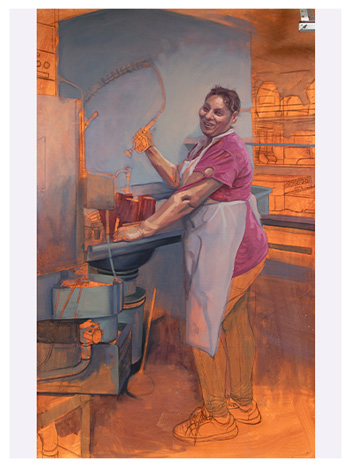
The first is from a series Morales calls "Border" and the second from a series she titled "Labor."
"Both incorporate that dream of wanting a better life," Morales said.
Joy, sorrow, dedication, a litany of other inscrutable emotions pours from the faces and postures of the figures Morales paints. All appear mid-movement, like she froze a single moment in their day. And in using her paint brush to capture the precise angle of a tilted mouth or the shadows of a furrowed brow, Morales lets the viewer find the subject's life story in a single look.
The emotive nature of Morales' pieces is so captivating that they've led to a number of professional successes for her, like meeting President George W. Bush in a private dinner orchestrated by the CEO of the George W. Bush Presidential Center in Dallas, having a piece hung in the U.S. Embassy in Mexico City, and being selected as one of 28 international artists to be featured in the "New Worlds: Women to Watch" exhibition taking place at the National Museum of Women in the Arts this year.
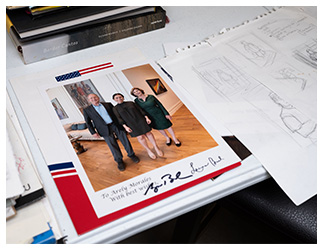 While her "Labor" series is inspired by the day-to-day experiences of immigrants, Morales felt she needed a different approach to evoke "the vulnerability of migrants as they take on the decision to leave their home country for the United States" with a "focus on their humanity."
While her "Labor" series is inspired by the day-to-day experiences of immigrants, Morales felt she needed a different approach to evoke "the vulnerability of migrants as they take on the decision to leave their home country for the United States" with a "focus on their humanity."
This pushed her into experimenting with landscapes, and one of the first she created was "Eyes Without Water, Without Name," which is a part of her "Border" series.
"The piece does talk a lot about that fine line between life and death in taking that risk [to migrate]," Morales said. "There are so many individuals who lose their life in the process, and their family never hears from them because a lot of them travel without IDs. So, they become one folder on the shelf of other [human] remains."
It's hard to view some of Morales' pieces without having a raw emotional reaction — and the size of her pieces add to that. Most canvases in her studio stretch from floor to ceiling and are wide enough that hugging one would be difficult work.
"The size is intentional," Morales said. "The issues I explore in my work have to do with visibility of marginalized communities, and working this large helps me make a very bold statement that says, 'There's no way you cannot see this figure.'"
The heart of Morales' work is to tell the stories of a community who often chooses — or is forced — to live behind the scenes. And as a Mexican native who ended up calling the United States home when her family moved here when she was 14 years old, her own story was the first one she had to grapple with.
SFA, she said, played a major role in helping her confront her identity.
"Undergrad was a special part of my upbringing as an artist because it was around those years that I became comfortable with my identity," Morales said. "I was insecure about who I was, what I represented, and during those years in the painting studio at SFA, I started to explore and celebrate my roots, my heritage, my culture."
Following in the footsteps of her photographer mother, Morales originally came to SFA to study photography. However, despite hating her first painting class, she eventually fell in love with painting and switched majors. She still often uses photography as a first step to capture the subject before digging into depth, angles and color.
"There was a moment in my first painting class where a switch flipped for me, and it was when we started working with color," Morales said. "I remember painting this metal base and becoming so intrigued, because you think of an object as one color, like a blue pot. But then you realize there are things around it and light reflecting off it. It's blue, but it has red, and it has yellow. I was curious and challenged by this."
After graduating from SFA, Morales moved away from Nacogdoches to attend graduate school at the University of Washington in Seattle, where she received a Master of Fine Arts in 2017.
All of Morales' work is a study in identity, informed by the years she spent grappling with her own. But coming out on the other side of that struggle made her determined to share the stories of Latino individuals.
"Painting through all those years became a way of healing for me," she said. "In grad school, I began to find this desire to speak out, because when I was younger, I didn't want anyone to know I was an immigrant because I was embarrassed and scared. There are still a lot of people within my community who are scared to express their feelings.
"But I'm no longer afraid to speak up. So, I want to be that [voice] for my community, because there are beautiful people with beautiful stories and so much strength, so much love. That's what I hope others get to see and experience in my work."
Every piece Morales completes is a collaboration with the people she paints. It's one of her favorite parts of the process — sitting down with someone, getting to know them and their story, researching histories, then finding the best shadows and lights and brush strokes to make their story come to life on canvas.
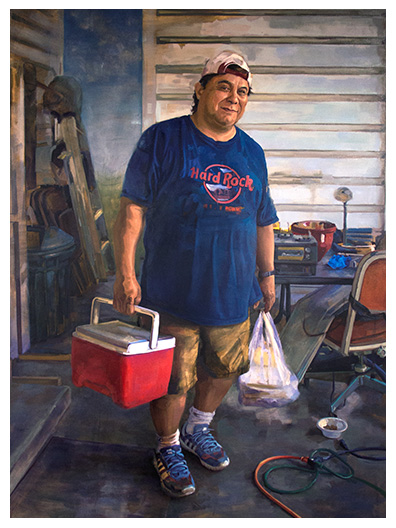
Her dad was one such subject. In Morales' piece, titled "Mi Apa'," her father stands with a small cooler in one hand and a full plastic bag in the other, either headed to or just returning from work. His eyes look mildly skeptical while his mouth still curves up in a slight smile.
"I really wanted to share that smile, because when he gets home from a 12-hour or 16-hour shift, he hasn't slept and is about to pass out. But every time I would see him — always that smile," Morales said. "I could see the toll [that much work] took. And I feel bad knowing that it's all because of me, his family, that he's taking on that much responsibility."
The heart Morales pours into her work is evident in every brush stroke (or sometimes broom stroke, with how large-scale she works). It's helped create professional connections that led to many collaborations, including her current partnership with the Talley Dunn gallery in Dallas, where a few of her pieces are always on display.
In April, the exhibit "New Worlds: Women to Watch" will open for a multi-month run at the National Museum of Women in the Arts in Washington, D.C.
And as one of 28 international artists chosen through multiple rounds of interviews and presentations, Morales will be there on opening night to celebrate not only the significance of the moment but also the stages of personal and professional growth she's endured to get there.
To learn more about Morales and her artwork, visit arelymorales.com and find her on Instagram @arely.art.
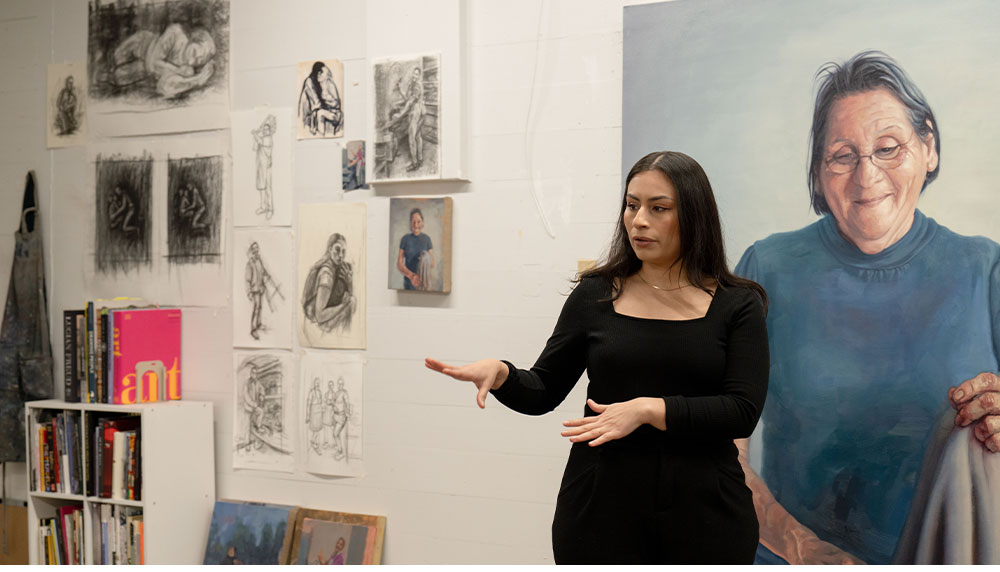
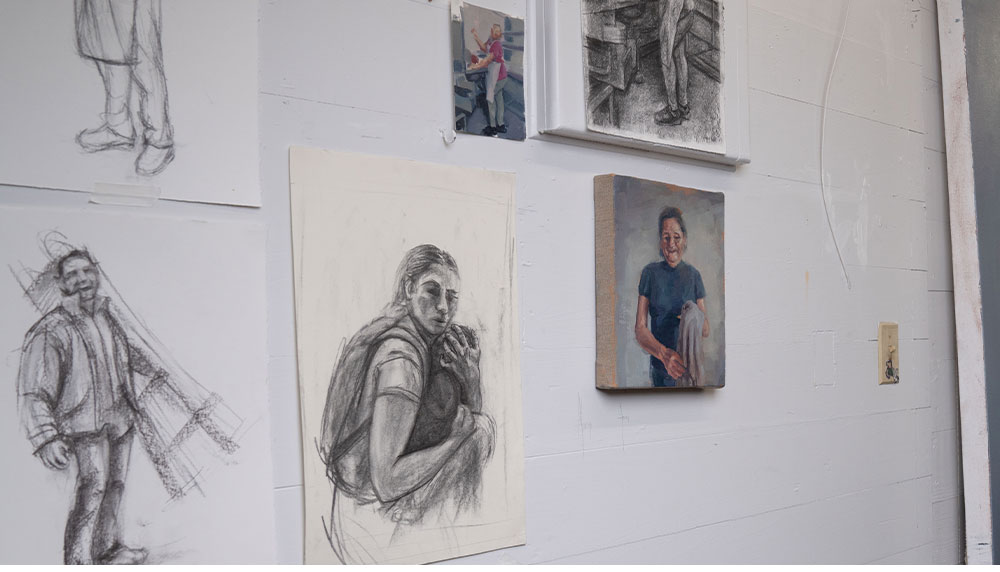
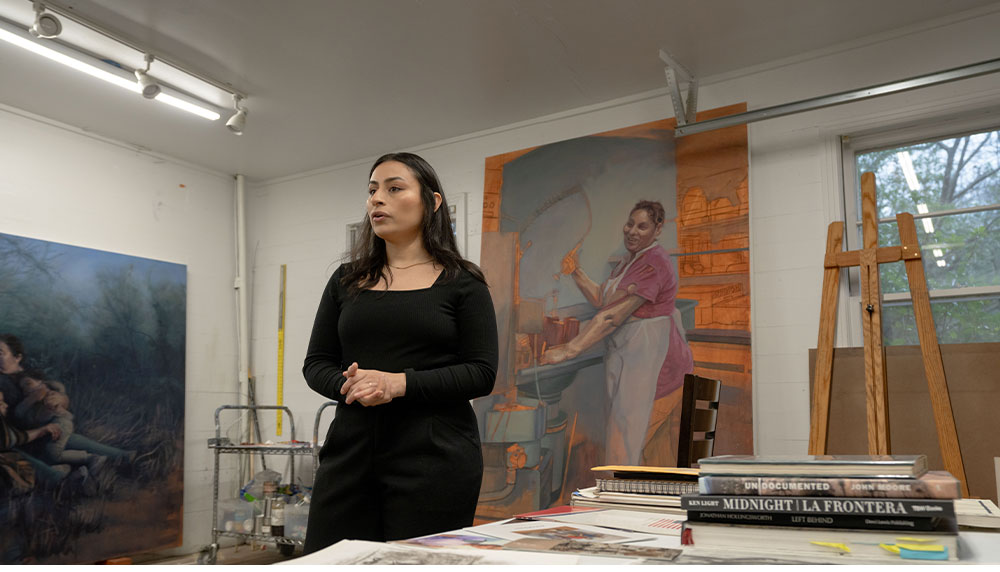
 Axe ’Em, Jacks!
Axe ’Em, Jacks!
